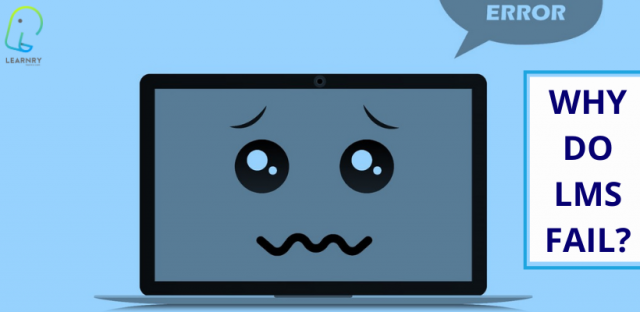LMS Implementation Checklist – Best LMS Guide
A recent study on the new way of learning and how it impacts you show that 44% of organisations are unhappy with their current Learning Management System. Most Learning professionals find their LMS challenging to use, difficult to implement, unfit for purpose and are dissatisfied with the current LMS operations.
Watching an LMS implementation project fail can be painful considering the time, energy and resources that have been expended in its purchase, deployment and implementation. According to a recent Brandon Hall Group’s LMS Trends study, 58% of companies using a learning management system (LMS) are actively looking to switch vendors after one year. Learning professionals agree that an LMS that may have felt right at the time of purchase can lead to disappointment, inertia, and disengagement down the line.
So Why Do LMSs Fail?

It comes as no surprise that LMS often fails despite its promise to provide a smarter, more streamlined and cost-effective learning process. Most of the LMS that are in use were not developed for the current workplace, do not integrate properly with existing LMS systems and are not designed with the learners in mind.
Learning management systems fail for a variety of reasons, most of which could be avoided by carefully evaluating your LMS system before purchase and using this to implement an LMS checklist.
In a survey we carried out, here are the major reasons why LMSs fail in many business organisations :
- Difficulty learning the system
- Technical issues
- Integration with other systems
- Lack of customisation
- Difficulty with scaling
- Slowed user productivity
- Low user adoption
- Security/privacy issue
But you don’t have to have such a negative experience when deciding on the LMS for your organisation. Use the five-step LMS implementation checklist below to avoid LMS failure from the very first step of choosing a Learning Management System to its implementation and deployment in your organisation.
5 Step LMS Implementation Checklist

Consider both the LMS and the Vendor
Most learning professionals pay attention solely to the LMS platform. But before selecting an LMS platform, you must have a deep understanding of the requirements, expectations and support systems you would receive from the LMS vendor.
Implementing an LMS requires a significant commitment of resources, and you need to make sure that you are investing in the right partnership.
Some of the criteria you should be on the lookout for are;
- Availability and contact of the support team
- Transparency of LMS pricing
- LMS Implementation time
- LMS security features
- Reviews of other users, preferably on 3rd-party review sites, such as goodfirms.co, capterra, e-learning industry, etc.
While setting up, ensure that you engage a service provider, you can trust, such as Learnry. With Learnry LMS, you get a partner who is committed to helping you achieve sustainable business success cost-effectively.
With a supportive and reliable partner like Learnry, you would be able to minimise technical obstacles from arising during the implementation process, overcome those challenges if they arise and achieve your desired objectives.
-
Keep it Simple
Decide on what you want your LMS to achieve. It would be best to go for a simple interface that allows you to achieve your goals and objectives than going for an LMS with features that you would not use.
Having too many features that are not linked to your strategic objectives would leave you with a muddled and complicated LMS. Your learners would also find it difficult to navigate the platform and would be more reluctant to use your LMS which would, in turn, lead to a low user adoption rate and ultimately a failed LMS rollout.
Before you ask for a demo, create a checklist with the features that are essential to your objective, and assess the LMS based on your predetermined features in your implementation checklist. This would help you stay focused on the critical features you would need to achieve your end goals.
However, don’t focus too narrowly on the current situation of your business. Make sure you give due consideration to the possible future of learning in your organisation. Choose an LMS that can evolve with your ever-changing business needs.

[maxbutton id=”1″ url=”https://learnry.com/demo/” text=”Get a Free Demo” ]
-
Double-check for Hidden Costs
We live in an era of smart marketing tactics. Before deciding on an LMS, always ask varied scenario-based questions to probe around possible hidden charges. Also, read the terms and conditions underlying the different pricing plans and get a detailed understanding of the cost associated with the LMS.
Most LMS projects end up failing because the features needed are bundled under hidden charges such as customisation fee, training and support fee, upgrade fee, content licensing fee etc.
These hidden charges can surpass the approved budget for your LMS and can become roadblocks that hinder you from a successful learning management system implementation.
-
Verify Compatibility
When implementing your LMS, You must ensure that it is compatible with your existing software and third-party systems. If not, you may be forced to do away with the selected LMS.
It is crucial to have a technical team analyse the requirements, add-ons and compatibility features that you need to seamlessly integrate your new LMS with your existing systems and processes.
Your LMS should also have an easy to integrate Application Programming Interface (API) that allows different apps to communicate with each other.
Use the Right Metrics
LMS projects that fail more often than not use the wrong metrics in evaluating the progress or success of the implementation strategy. You need to carefully list out the relevant data and reports that you would use to capture progress, monitor quality and mitigate issues as they occur while implementing your LMS.
Your metrics should not only focus on the time it takes to set up the LMS, create courses or register new users; it should also capture how many employees are actively using the platform, completing courses and passing your assessments.
These metrics would help you monitor the adoption rate of the LMS project and quickly step in to prevent the LMS from being sidelined. Best practices suggest that you monitor the LMS utilisation and adoption rates monthly for up to six months after implementation.
Finally, successfully launching an LMS would positively impact your organisation’s learning function. But if you make crucial mistakes, your new platform may end up sidelined and unused before you can prove its worth.
You need to carefully and consciously adopt the steps listed above to avoid failure in your LMS initiative. Furthermore, you can schedule a consultation with our Learning management system expert to walk you through the practical application of each step listed above. Click here to request a demo.




Pingback: 23-Step Framework on How to Assess, Choose and Implement a Learning Management System - Learnry LMS